
Do you get bored of the same old fruit? I know I do. Even the somewhat exotic fruits, like pineapple, papaya, kiwis, and pomegranate are commonplace. Sometimes you just want something completely different. Thankfully, there are plenty of truly exotic fruits. Some of these are loved by locals and found nowhere else, while others are grown in multiple parts of the world and can even be purchased online. If you’re specifically looking for exotic green fruits, then this post has you covered.
The number of different exotic fruits is staggering, so let’s break things down a little. We talked about exotic yellow fruit in another post, so this time we’re focusing on exotic green ones.
To do so, we’re mostly talking about fruits that are eaten while they’re green. Occasionally this means that you’re eating the fruit while it’s still under-ripe. But, most of these fruits are fully ripe when they’re green.
What if you want to try one of them? That depends on the fruit you’re considering. Some of them may be cultivated locally or perhaps you can order them as part of an exotic fruit box. Others might be limited to where they naturally grow.
Exotic Green Fruits (With Pictures!)
Cucamelon
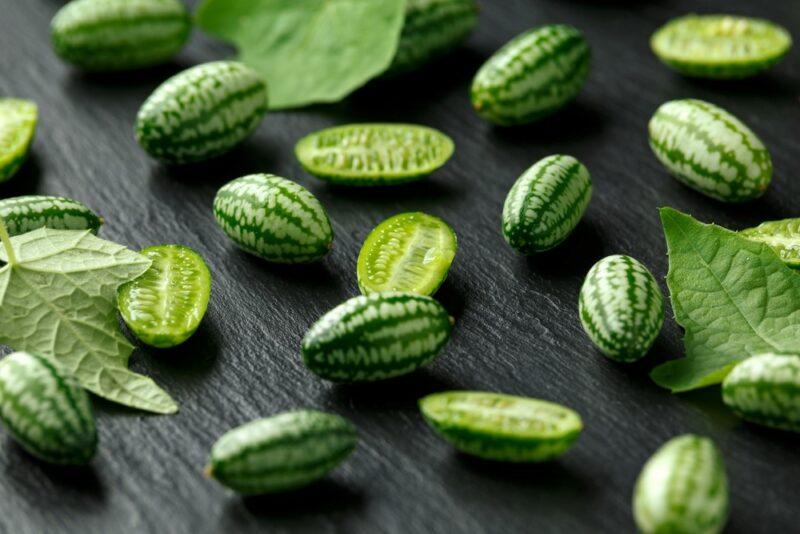
Cucamelons are amazing, as they simply look like miniature watermelons, complete with tiny seeds. You can even eat them as-is, without needing to remove the skin.
The fruit doesn’t taste like watermelon though. Instead, cucamelons are more similar to cucumbers, with a touch of lime flavor as well.
These fruits aren’t too difficult to buy, but they can be pretty expensive. It’s often best to order some seeds and grow them yourself, as the plants produce many many fruits and are resilient to pests and diseases.
Genips (Spanish Lime)
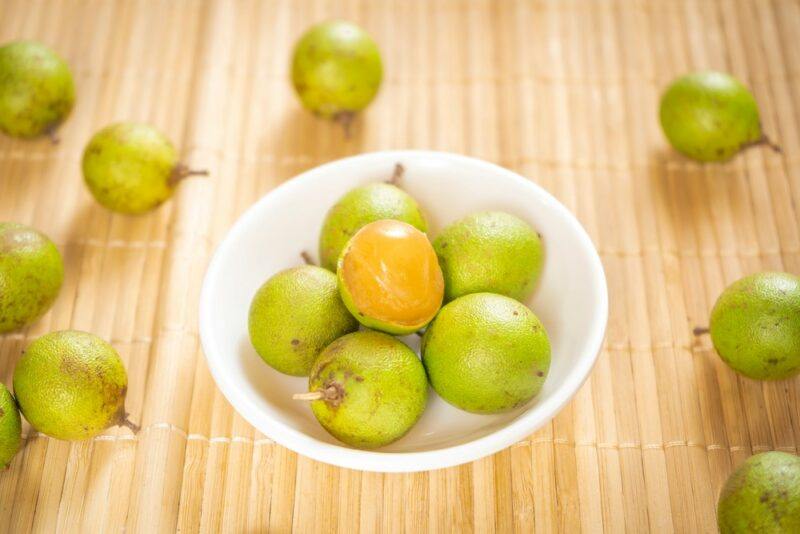
Genips are often called Spanish limes, but don’t expect them to be like regular limes. While they have a familiar taut green skin, they have a slimy peach-colored flesh that is only slightly tart when the fruit is fully ripe.
There are one or two seeds within the pulp as well, which are generally not eaten.
These are great exotic fruits to try, as they can be found in the Virgin Islands. They can sometimes be ordered online as well.
Dalandan Oranges
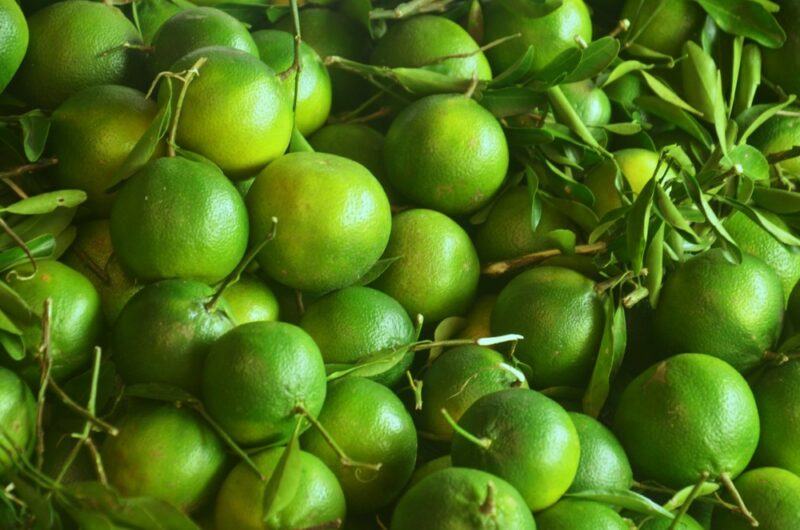
These citrus fruits have such a delightful color contrast. Their skins are dark green, while the flesh is bright orange instead and punctuated by green seeds.
This is a tart fruit, but some sweetness comes through as it matures, making it sweet enough to enjoy raw or juiced.
Durian
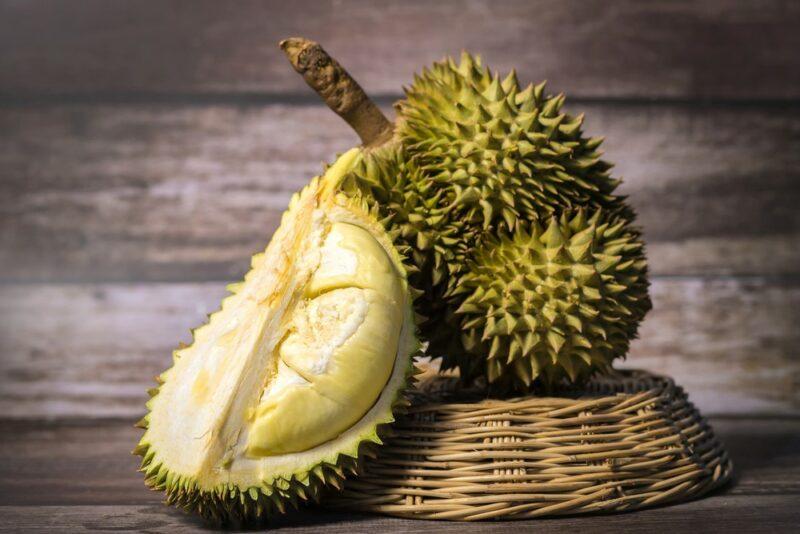
Durian often has brown skin, but some varieties do have green skin instead. It’s an infamous fruit – mostly due to the smell, which is sometimes said to be the most disgusting in the world. It has been compared to sewage and gym socks and can hang around for days.
Problems with the smell have been so bad that you can’t take durian on the subway in Singapore and some hotels have banned the fruit entirely.
Yet, many people still buy durian regularly. The reason? Because durian doesn’t taste like it smells. The flavor is unusual, sometimes described as having features of caramel, garlic, and whipped cream, all at once.
While that description doesn’t sound appealing, many people do enjoy the taste of durian. If nothing else, the fruit is worth trying for yourself.
Durian is also rich in nutrients and contains a decent amount of fiber, which are other reasons for its popularity. Just don’t expect it to be like other fruit. Seriously. Even if you have an open mind, durian may take a while to get used to.
Chayote
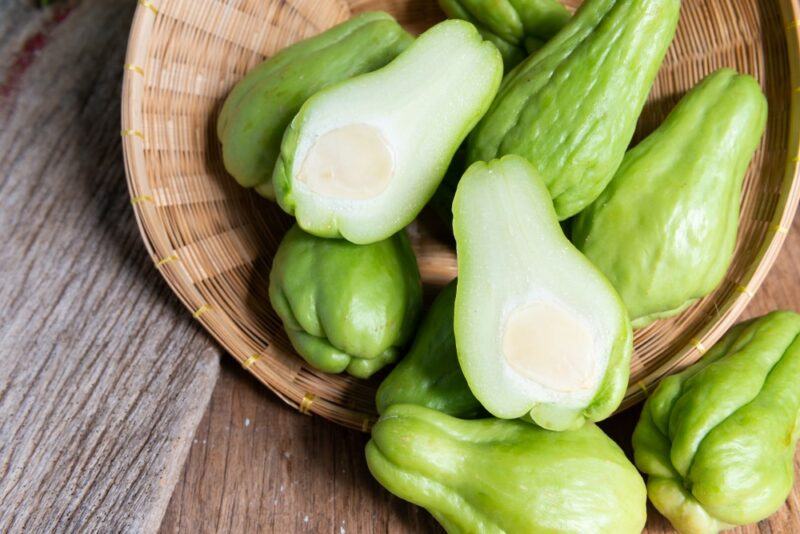
Chayote sometimes goes by the name vegetable pear – and is a type of squash. It can be used raw, just like a cucumber, working well in many of the same recipes.
It’s also possible to cook chayote, like sauteing it or pan roasting it with spices. The fruit’s flesh softens as it is cooked, a feature that can work well in plenty of dishes.
While this is an unusual fruit, it isn’t too difficult to find. It’s grown in multiple US states, so you should be able to easily order it online or perhaps find it in local markets.
Finger Limes
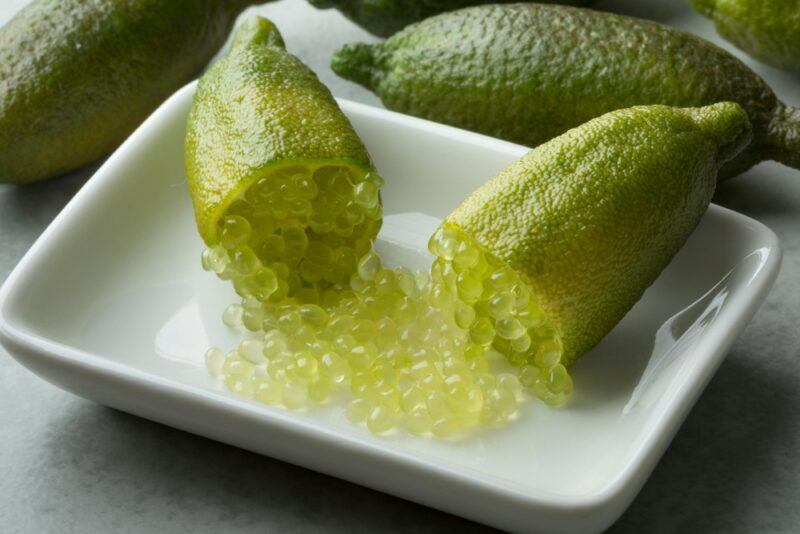
Finger limes are a type of citrus fruit, but they’re different than you might expect. Instead of containing juicy flesh, they are filled with tiny bulbs of fruit juice that burst easily.
The flavor is similar to regular lime juice, so the juice globules pair well with many other ingredients. Finger limes are particularly popular for gourmet cooking, helping to make meals stand out.
While finger limes are often green, you can find other colors as well, including limes where the skin and the juice globules both have a red tinge.
Kaffir Lime
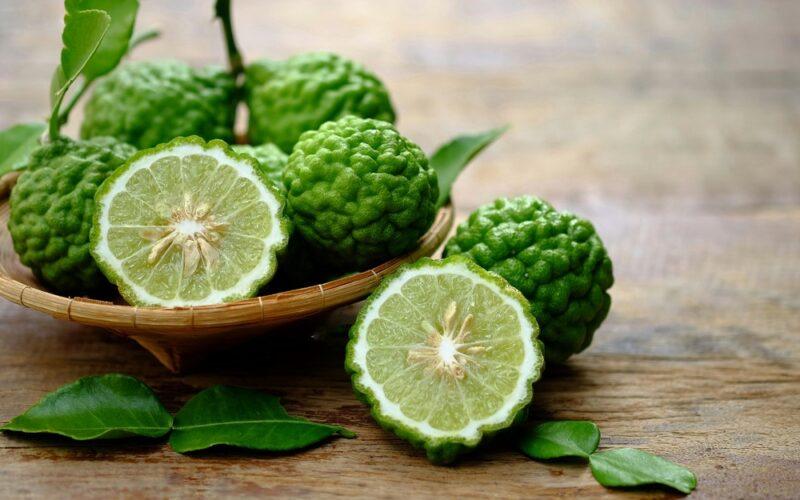
Kaffir limes come from Southeast Asia. This is an unusual type of and not just because of the knobbly skin.
Unlike most other citrus fruit, the leaves of kaffir lime are the most well-used part. These feature in many Thai, Vietnamese, and Cambodian dishes, adding a notable citrus flavor.
The rind is sometimes used as well and can even be candied and eaten. The juice of the lime isn’t used nearly as frequently, but does feature in some traditional medicines and as a cleanser.
Lucuma
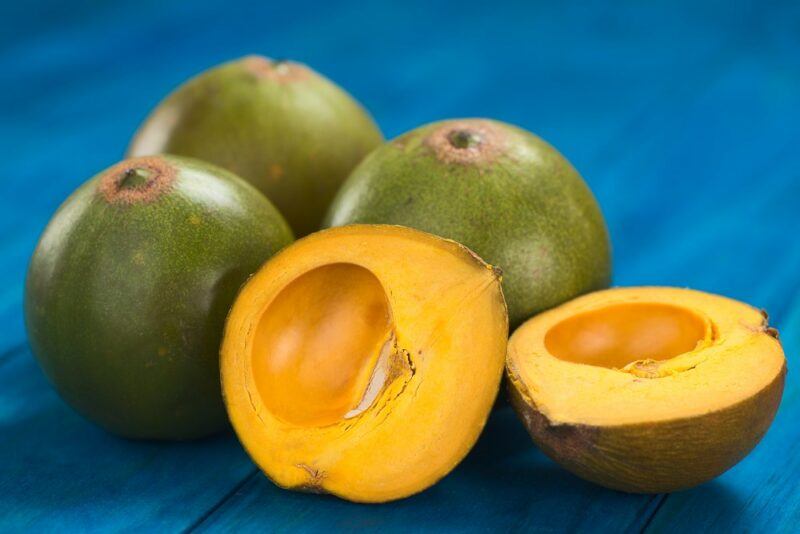
Most fruits are at least a little juicy, but this isn’t the case for the lucuma at all. Instead, the flesh tends to be chewy, chalky, and fibrous. The flavor is unexpected too. It’s sometimes described as being like a pumpkin pie or as having a slight caramel tone.
The fruit can be eaten fresh, although the texture isn’t extremely appealing. Many people prefer using it in recipes instead, like marmalade or even pancakes.
Ambarella
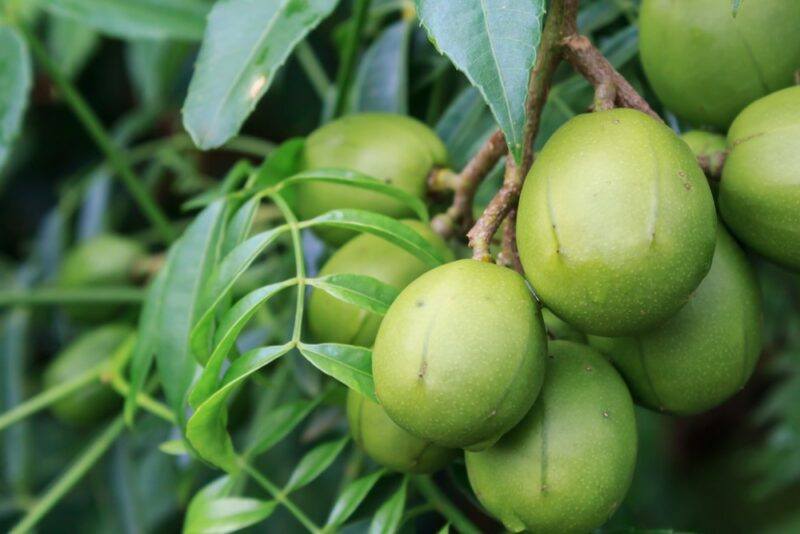
This green tropical fruit goes by plenty of names, including the Indian hog plum, golden apple, and June plum. The fruit often transitions from green to yellow as it matures, but some varieties retain the green color even when the fruit is fully ripe.
Ambarella fruits can be eaten when under-ripe. However, they’re quite sour, so they’re more often dried and used in recipes. As the fruit ripens, it gets sweeter (although some sour notes still remain) and can be used in fruit salads, desserts, and many other ways.
Hala Fruit
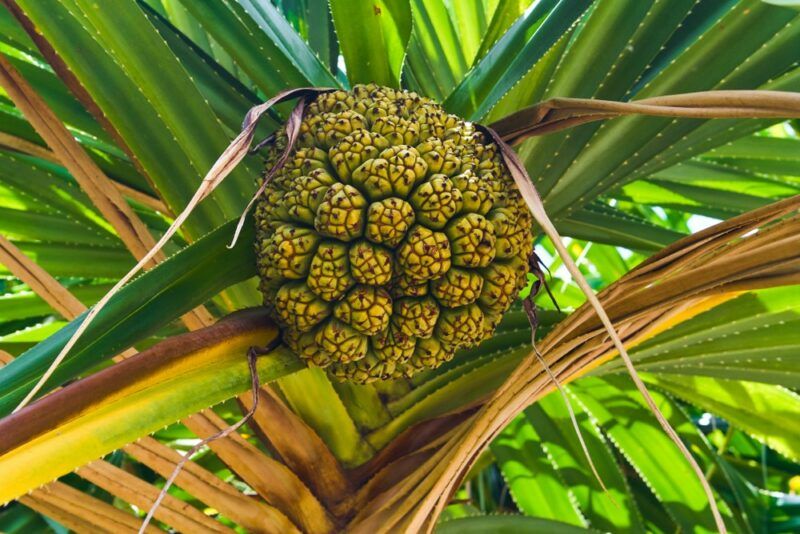
The hala fruit looks both strange and amazing, almost like an exploding planet or perhaps some type of warped pineapple.
The fruit is made of many individual segments. The outer portions of each are tough and fibrous, so much so that they can be used for flossing. The fruit is often green on the outside, even when ripe, but some varieties have a vibrant orange-red exterior instead.
The interior is a different story, as here the fruit tends to be pulpy and easy to eat. Hala fruit can be enjoyed raw, ground to make a paste, turned into juice, or used in many recipes.
Marang
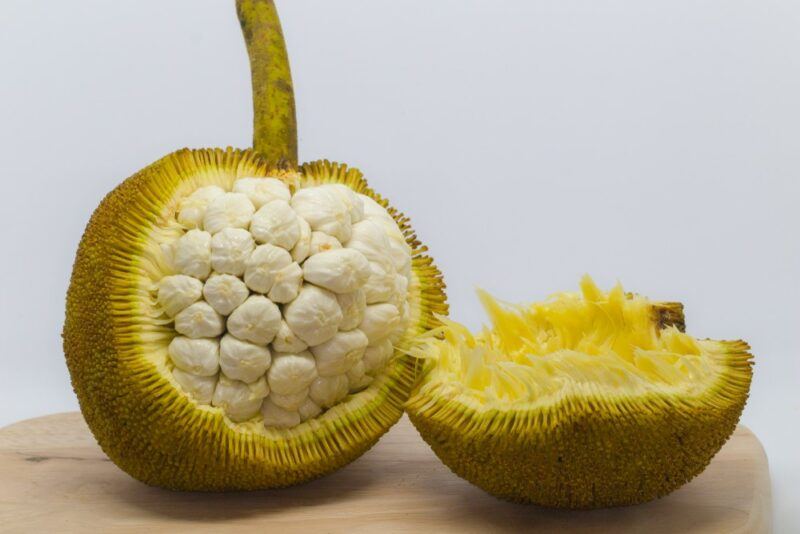
The marang fruit looks much like the durian. Both fruits are famous for having a strange smell, to the extent that they’re sometimes banned in airports and hotels.
While the marang does still smell weird, the scent isn’t as pungent as the durian. You might even call it pleasant. The flavor is difficult to describe, but contains notes of pineapple, strawberries, and even cream.
The exterior of the marang fruit varies in color, often with brown-yellow tones. However, there are green marangs too. These are sometimes called evergreen marangs and may be the most delicious type.
Green Lychee
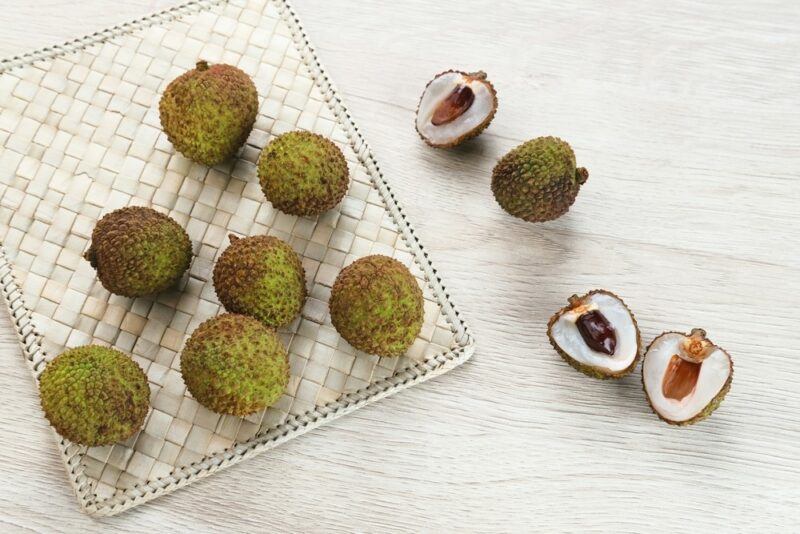
Most of us are familiar with the classic pink-red lychee, but did you know there are green lychees too? We’re not talking about unripe fruit either.
Instead, there’s a variety of lychees that are green when they’re fully ripe. These have a bumpy skin, often with a slight touch of red. Inside, they contain juicy and aromatic flesh, plus a single seed.
The flesh of the fruit can be eaten raw or used last minute in cooking to add a delightful flavor. The fruit’s seed is inedible, so it’s often thrown away (but can be used to make tea as well).
Yuzu
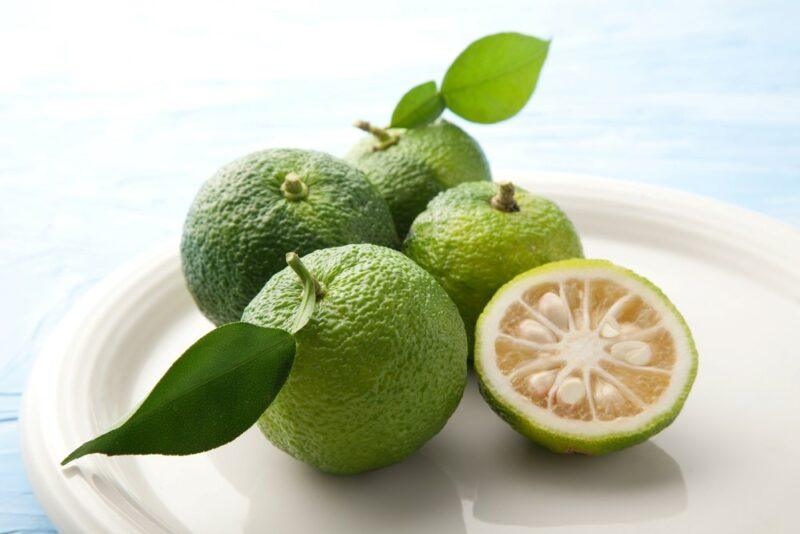
Yuzu also featured on our list of exotic yellow fruits, as the skin color ranges between yellow and green. This is a citrus fruit that is extensively cultivated throughout Japan.
Yuzu is particularly famous for the strong scent that comes through in its zest. This zest is often used in cooking and even in cocktails. Yuzu juice is often used as well.
While yuzu cannot legally be imported into the United States, the fruit is grown in California. As such, you can easily buy it online and try it for yourself.
Pacay
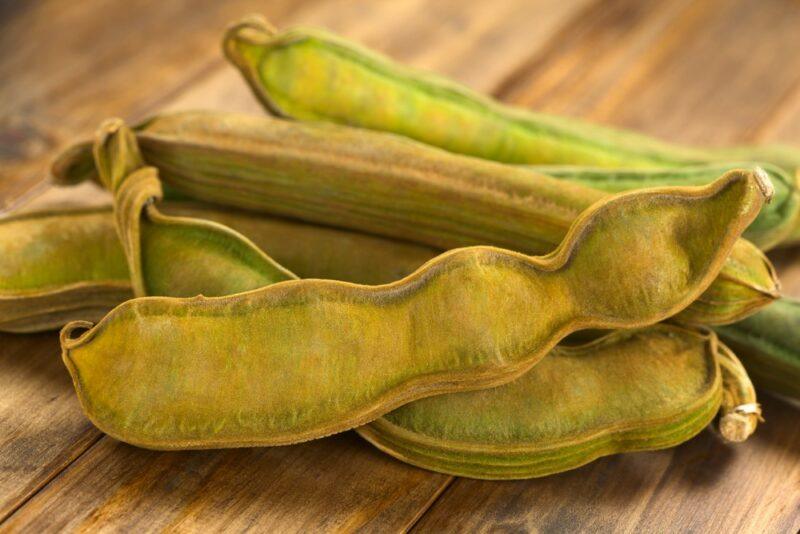
Pacay fruits are interesting, partly because they’re legumes and are related to other legumes, like green beans and snap peas. The fruits do have that familiar bean-like shape.
The interior of the pod is where things get interesting. The fruit contains white edible wedges of cotton candy-like flesh. This flesh has a light and slightly sweet flavor, with mild vanilla tones.
The combination of texture and flavor has earned the fruit a second name – ice cream bean.
Jalpai
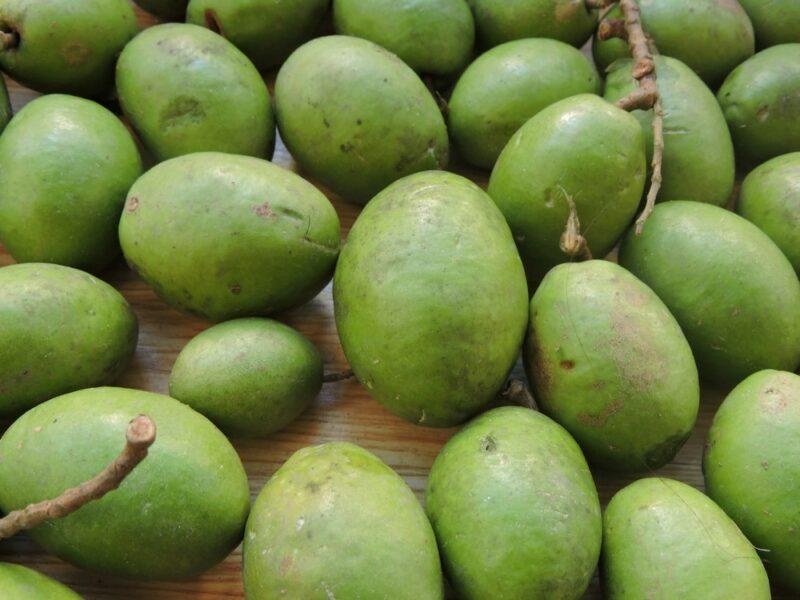
This fruit is also sometimes known as an Indian olive, but don’t expect to see Indian olive oil, as jalpai fruits are not oily in the same way.
Jalpai fruits tend to be sour and are mostly used to make chutney, pickles, and similar dishes, rather than being eaten on their own.
Cempedak
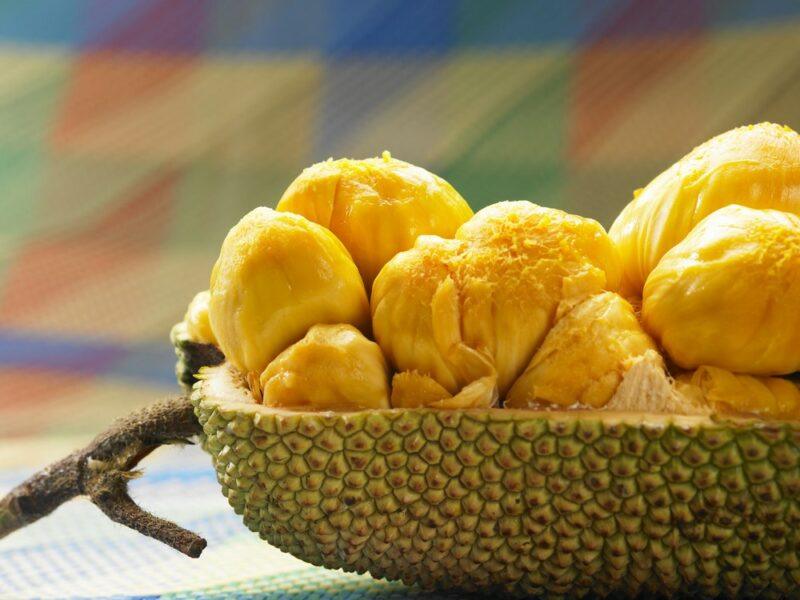
The cempedak fruit may look familiar, as is very similar to a jackfruit. Both types of fruit tend to grow in large cylinders and can be cut open to reveal slightly slimy chunks of flesh that surround seeds.
Cempedak tends to have a sweeter flavor than jackfruit and is even more fibrous. It has a distinct scent too, similar to that of the infamous durian.
Like the jackfruit, you can eat cempedak raw or cook it. Deep fried cempedak fritters are particularly popular. They’re fantastic as a first way to try the fruit.
Pomelo
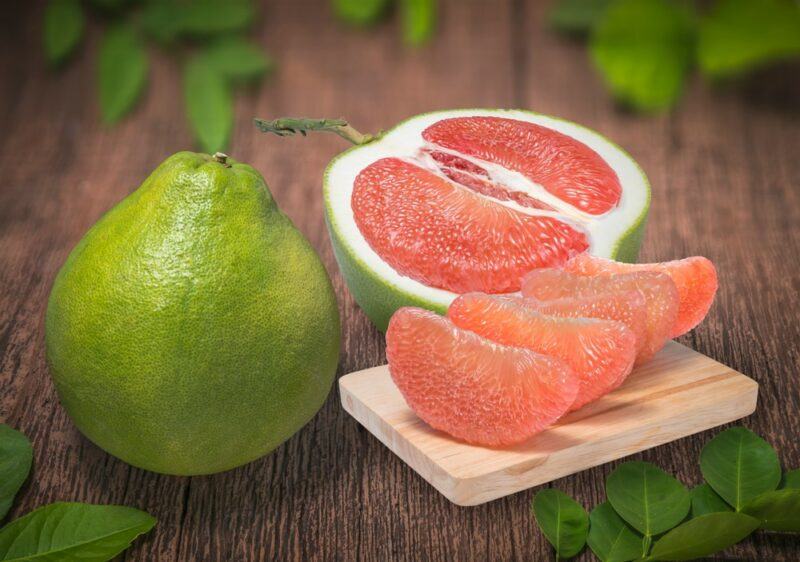
Pomelo is a large citrus fruit from Southeast Asia. Unlike many citrus fruits, this is a natural species, not a hybrid. In fact, the pomelo may be one of the main citrus parent species, from which many modern species were hybridized.
The skin of the fruit varies from yellow through to light green, while the flesh is often yellow, but can be pink as well. The flavor is similar to a grapefruit, although it lacks some of the intense bitterness found with grapefruit.
There’s one catch though – the fruit does contain some of the same compounds as grapefruit, so it can interfere with prescription medications. If you’ve been told to avoid grapefruit for this reason, you’ll need to give pomelo a miss too.
Jackfruit
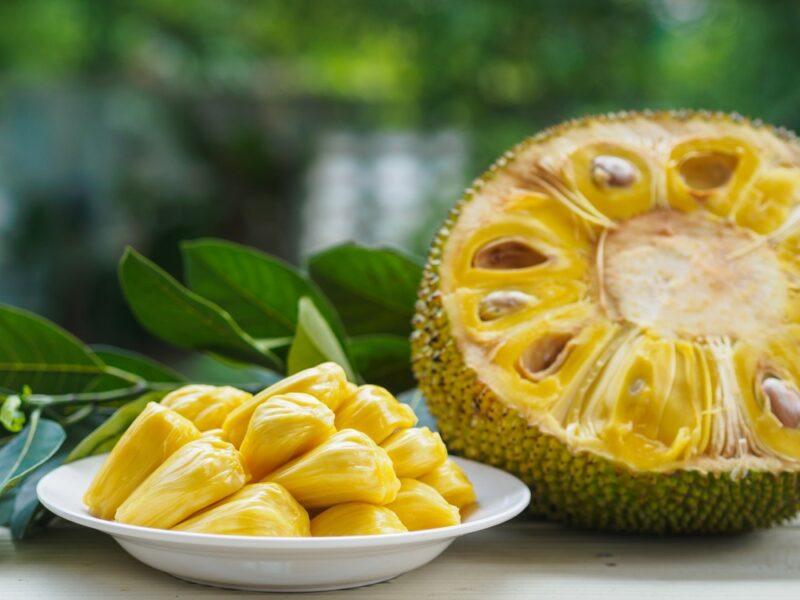
Jackfruit is a large exotic fruit with green-brown skin and yellow flesh. You can eat jackfruit flesh raw, just like most fruits, but it is often used as a meat substitute instead.
As such, you might be using jackfruit flesh cooked or even in a rich sauce. It’s an unusual way to use a fruit, but the fibrous nature of jackfruit flesh makes it surprisingly good as a meat alternative.
Monstera Deliciosa
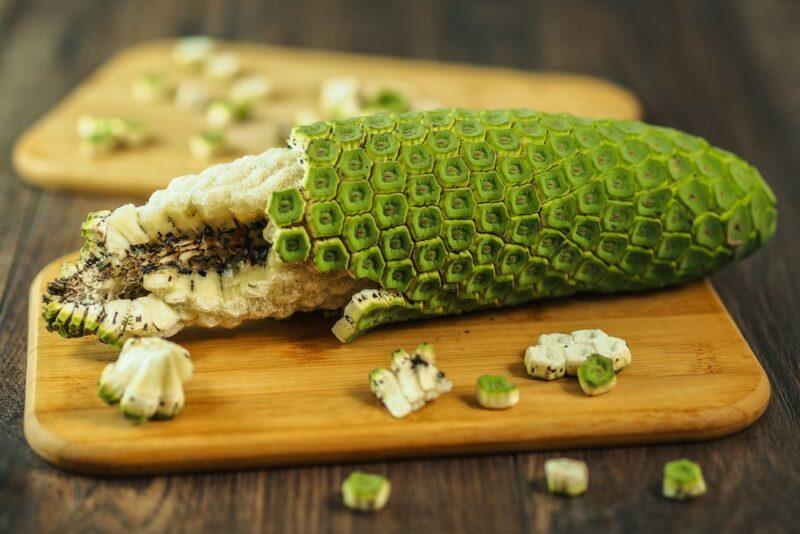
Monstera deliciosa plants are sometimes called Swiss cheese plants and they’re often grown decoratively. The plants themselves are slightly toxic to humans and pets, but the fruit is edible.
It’s an interesting type of fruit too, as it has a complex flavor, with nuances from many classic fruits, including guava, mango, strawberry, and even passion fruit.
Monstera deliciosa fruit needs to be completely ripe before you eat it; otherwise, it may burn your throat. The ripeness is easy to determine, though, as the green scales of the plant begin loosening when the fruit is ready for eating.
Jocote
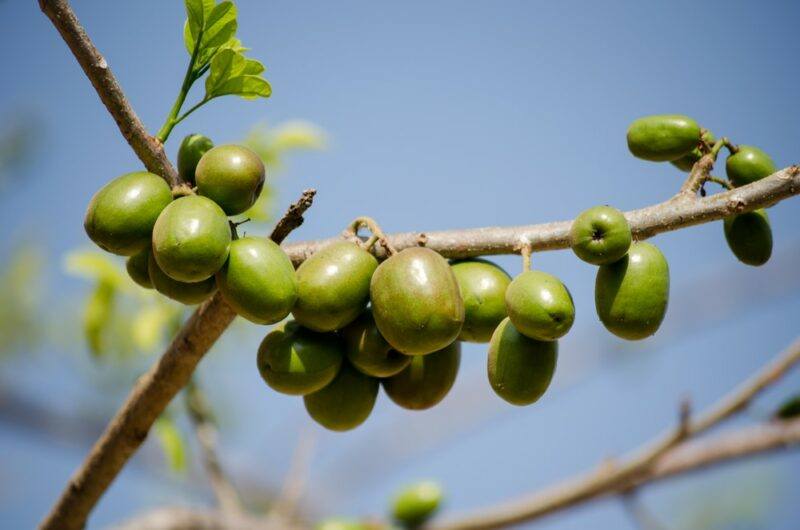
Jocote fruit tend to be green early in the ripening process, then yellow or red once they are fully ripe.
We’re including them in the list because the under-ripe versions are often eaten, either raw or as part of a recipe. As is often the case, the green version of the fruit tends to be tart and acidic.
You might even add a little salt to the fruit before eating it. Doing so might seem odd, but the trick helps balance out some of the acidity.
Calamansi Limes
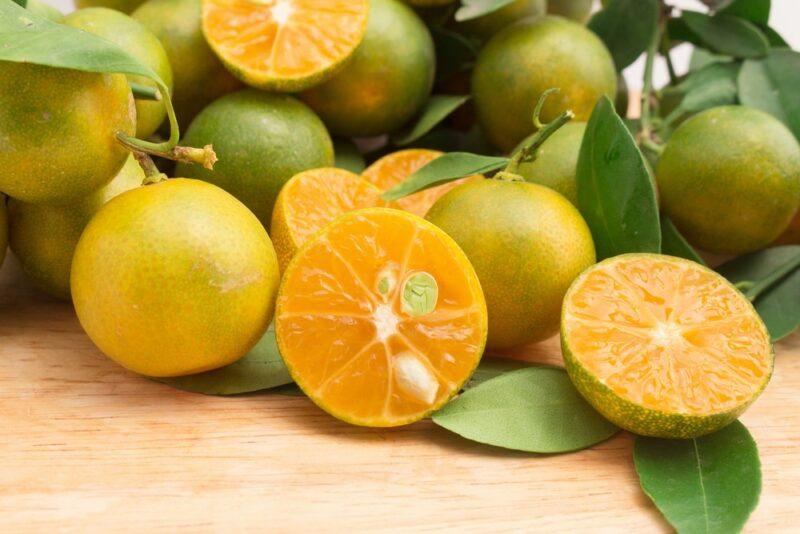
Here’s another fruit that goes by plenty of names. Calamansi, calamondin, Philippine limes, and Philippine lemons are the main ones. You might see others as well.
The fruit is a citrus hybrid, most often grown in the Philippines. Calamansi limes tend to be green when immature, then green-orange when fully ripe. They’re often used when still immature, partly because they can take a full year to ripen.
The bright orange flesh of the fruit stands out, as does its tart flavor. Calamansi limes aren’t often eaten on their own. Instead, the juice may be used to make lemonade or as part of other fruit juices.
The flesh can also be sliced and used in many dishes. Many restaurants even serve wedges of the limes alongside a meal.
Feijoa
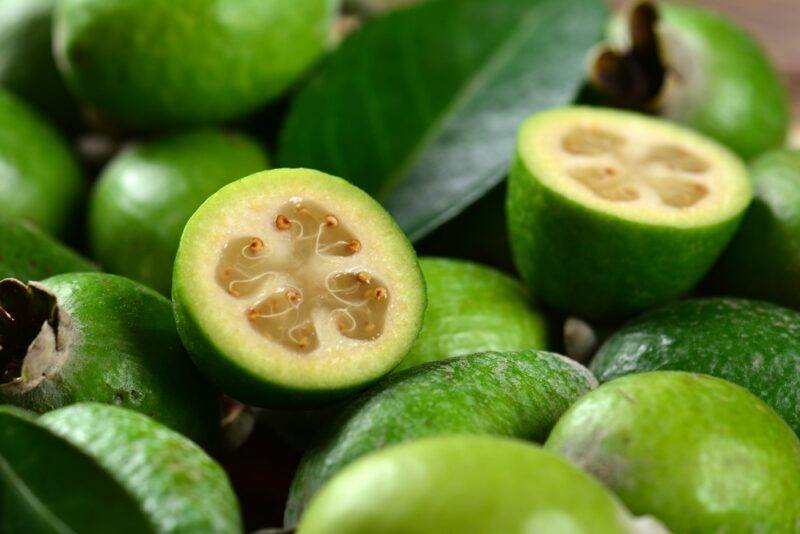
Feijoas are sometimes known as guavasteen or pineapple guavas – and are indeed relations of the guava. They have a distinct scent and flavor. Some say they taste a little like a mix of pineapple, strawberry, and guava flavors, although there’s a difficult-to-describe element as well.
The fruit is often eaten by cutting it in half and then scooping out the inside using a spoon. The flesh is mostly creamy white, occasionally with a touch of brown.
Breadfruit
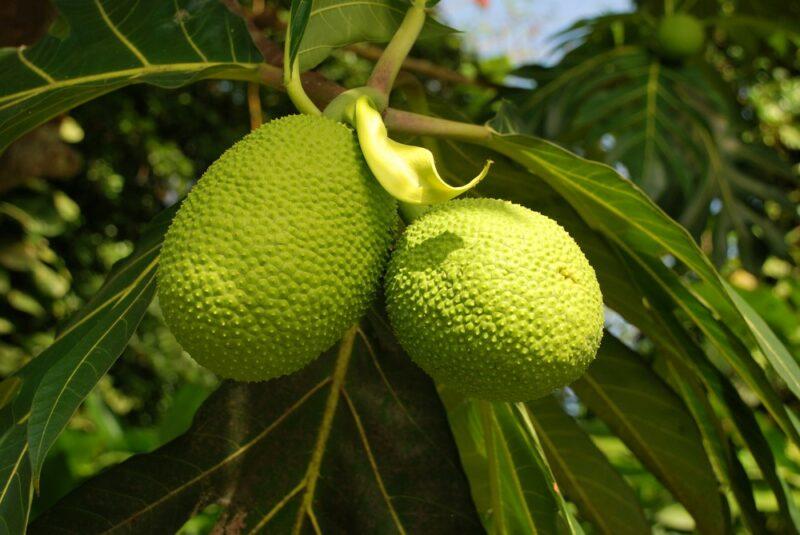
Breadfruit is pretty well-known these days. The name comes from how the immature green fruit can be baked and have a smell that’s surprisingly like baked bread.
The fruit also has a long history in the Pacific as a staple crop, one that has provided sustenance to many generations. Not surprisingly, there are now many varieties of breadfruit. Some of these are green when immature and ripen to a yellow-brown color. But, others remain green even when they’re ripe.
If you’re using an unripe breadfruit, then you can treat it much like a potato. You can also try fresh breadfruit. This is softer and has an almost custard-like texture. There is still a somewhat bread-like flavor, but the fruit is also quite sweet and delicious.
Black Sapote
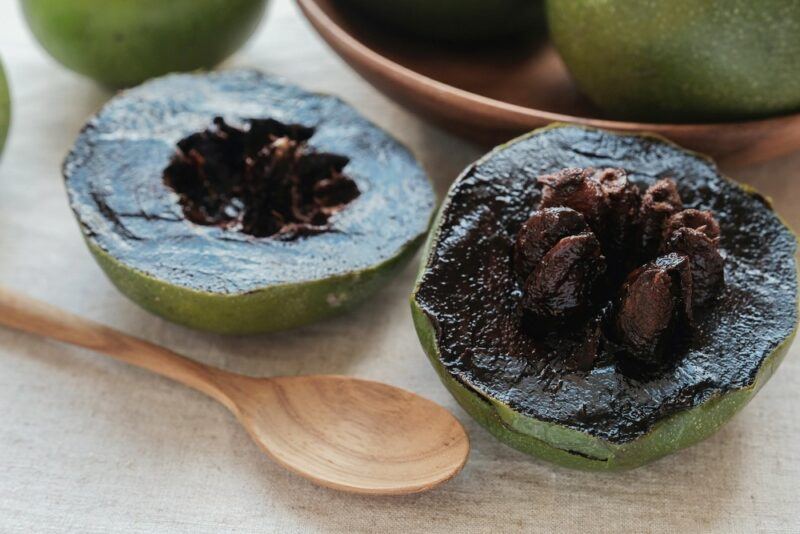
The black sapote is famous for its flesh. Underneath its green skin is a deep brown flesh that surrounds large seeds.
This flesh is often described as looking like chocolate pudding and even has a similar texture. However, the fruit doesn’t taste like chocolate at all. It is incredibly sweet, true, but there isn’t much flavor.
The fruit is best eaten when it looks bruised and over-ripe, so keep this in mind if you ever come across some.
White Sapote
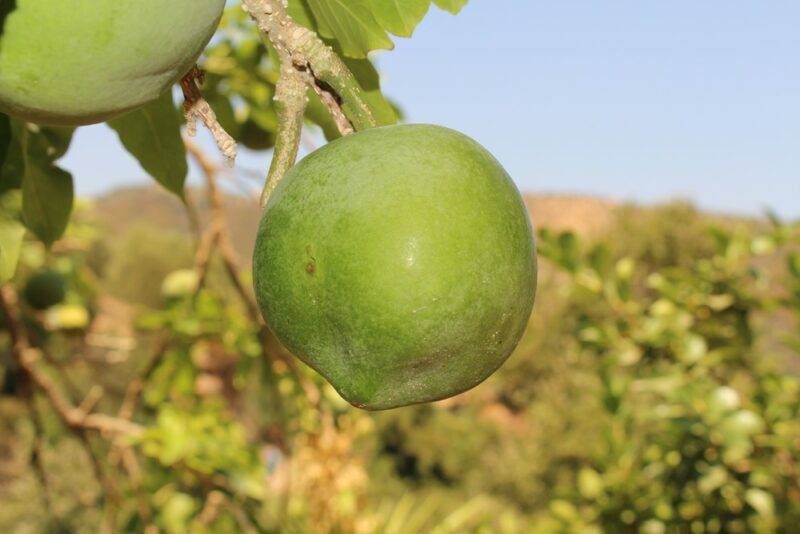
The white sapote has green skin as well. This time, though, the flesh is almost white rather than dark brown.
This fruit is sweet as well, with a complex fruity flavor that seems like a blend of banana, peach, and pear. Some people also say that the flesh reminds them of custard. You can even scoop the flesh out with a spoon and eat the fruit that way.
Interestingly, the white sapote and black sapote aren’t closely related. The white sapote is actually a type of citrus instead.
Custard Apple
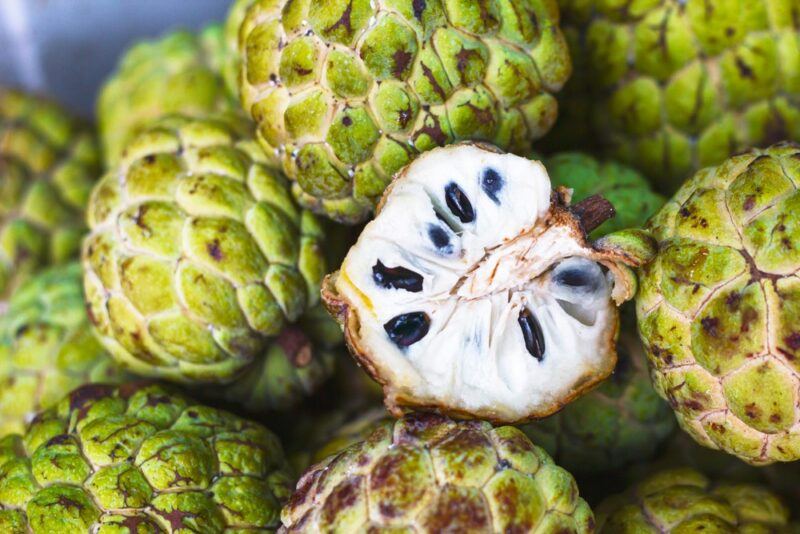
Custard apples gets a little confusing, as there are multiple related species – and their fruits are often all known as custard apple or custard fruit. There are plenty of similarities too, including a delicious flavor and a custard-like texture.
Much of the time, Annona reticulata is considered the ‘true’ custard apple species (although this is up for debate too). This version of the fruit can have a brown, yellow, or greenish outside, depending on the variety.
Not surprisingly, the flavor varies from variety to variety as well.
Cherimoya
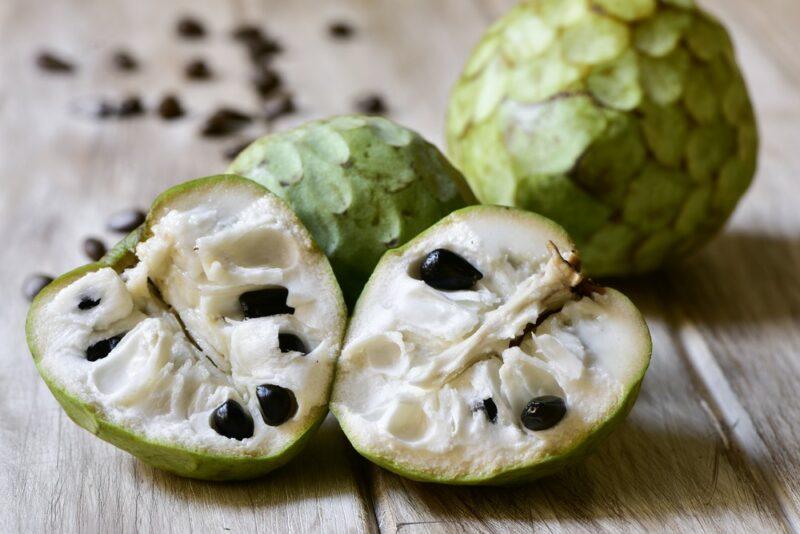
This fruit comes from the tree Annona cherimola. You’ll often see the fruit called custard apple too.
Most of the time, the cherimoya has a green fruit, although you may sometimes see other colors.
The custard apple name comes from the fruit’s texture, which really is creamy – just like custard. The flavor changes depending on the variety and often contains flavor notes reminiscent of other fruits, like strawberry, pineapple, and banana.
Sugar Apple
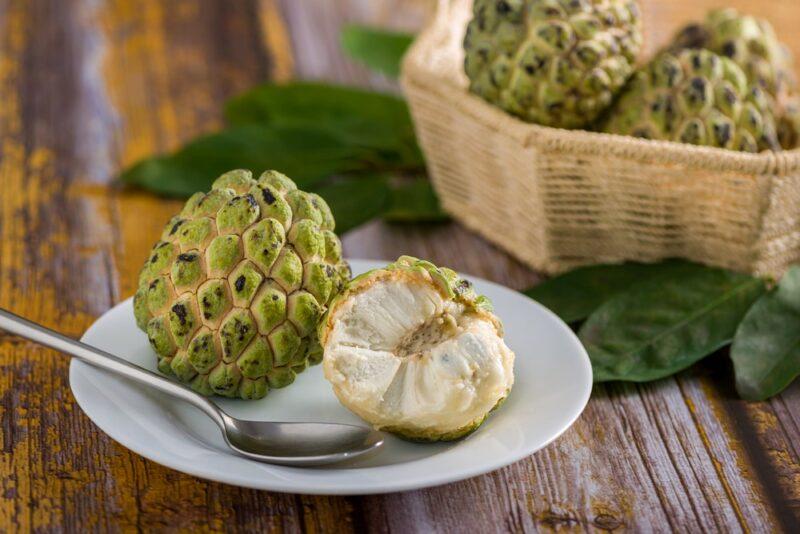
The sugar apple looks and tastes much like the cherimoya. You’ll even see sugar apples called custard apples too.
There is a difference though, as the sugar apple comes from the species Annona squamosa, while cherimoya is from the related species Annona reticulata.
The sugar apple is more widely cultivated than its related species, as it survives better in lowland tropical climates. It is now grown in many parts of the world, making the fresh fruit relatively easy to find.
Soursop
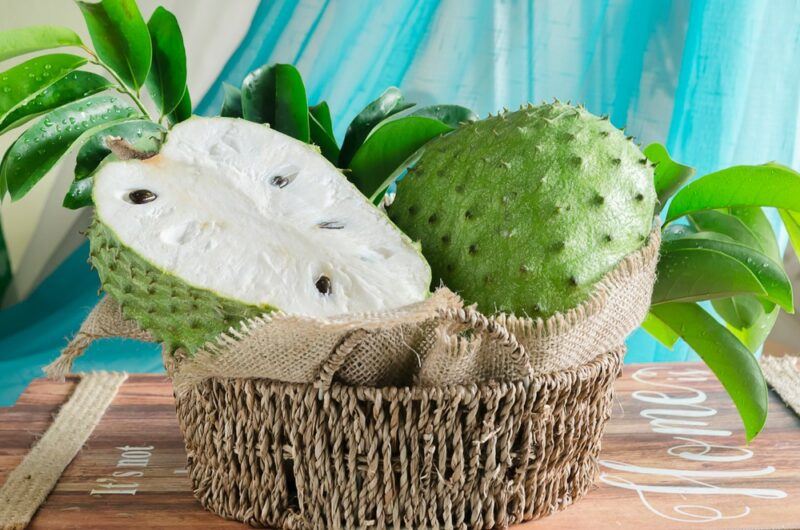
The soursop will look familiar too, as it comes from the same family as the previous entries. The flavor is also recognizable, sometimes described as being somewhere between a pineapple and a mango.
Soursops aren’t sour exactly. Instead, the fruit has a sweet-tart flavor that seems to transition through different stages as you eat it.
There’s plenty of discussion about potential health benefits from soursop, like the chance to reduce inflammation or lower cancer risk. Such benefits might apply to the previous fruits too, however much more research is needed (isn’t that always the case?).
Atemoya
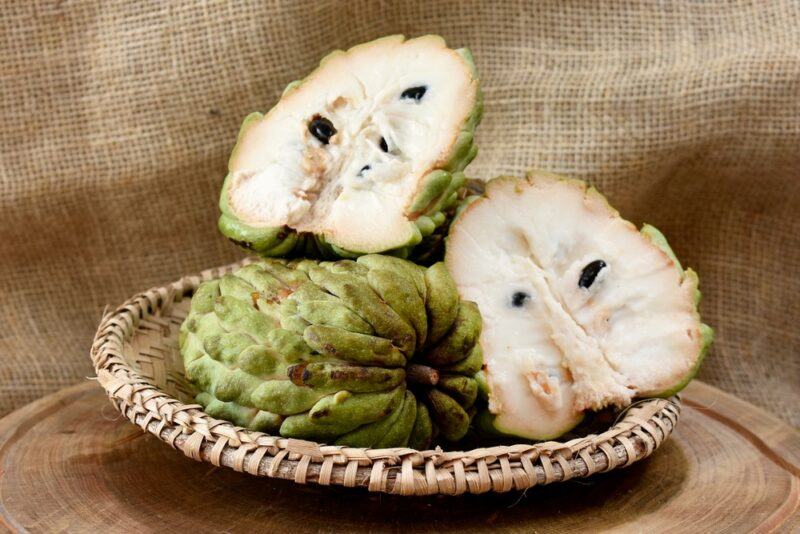
Then there’s this fruit. The atemoya is a hybrid of two fruits we’ve already mentioned – cherimoya and sugar apple.
The atemoya is most similar to the cherimoya, with smooth and juicy flesh. It’s sometimes said to taste a little like a pina colada. This might be why it’s also sometimes known as a pineapple sugar apple.
The seed kernels here are toxic, as are the seeds from closely related species. Thankfully, the shells are hard enough that you can often eat them without ill effects. Still, it’s best to avoid the seeds whenever possible.


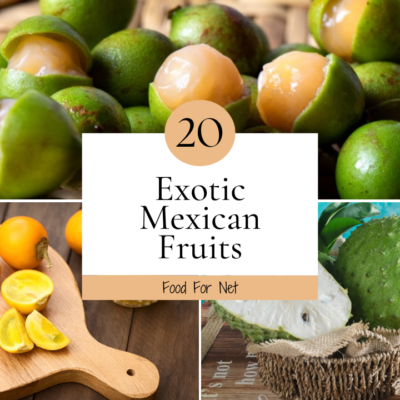

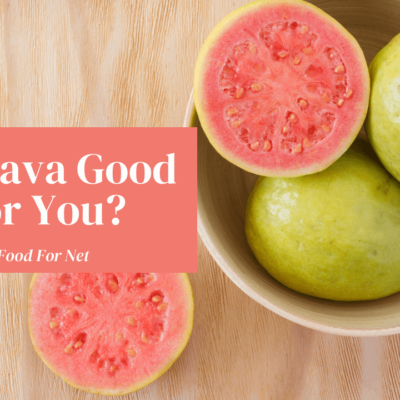
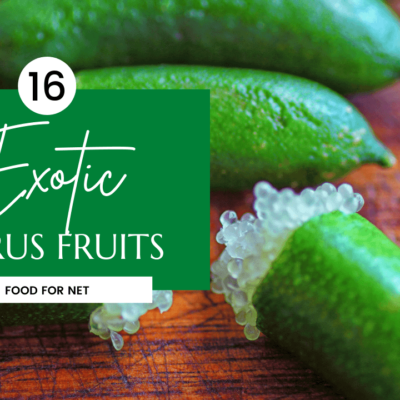

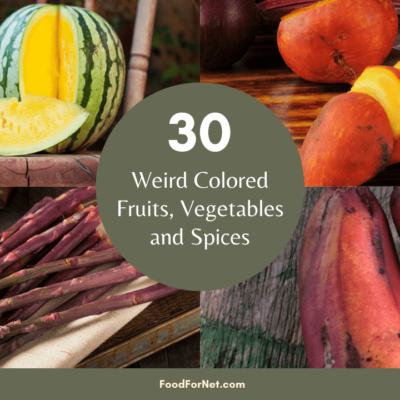

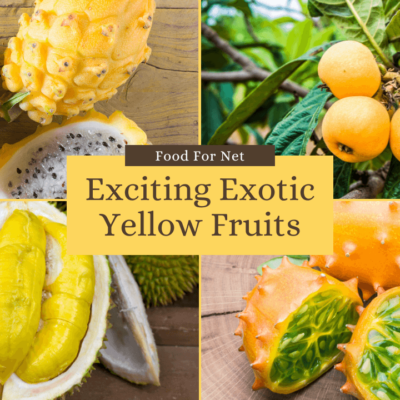
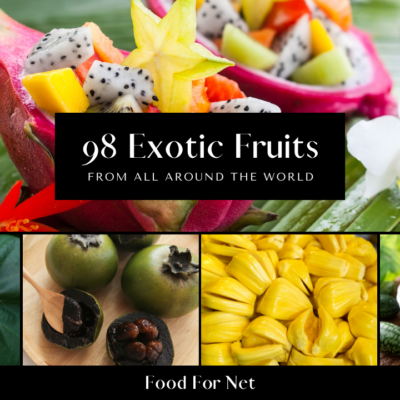

 5 Best Coconut Water Brands
5 Best Coconut Water Brands
Leave a Reply